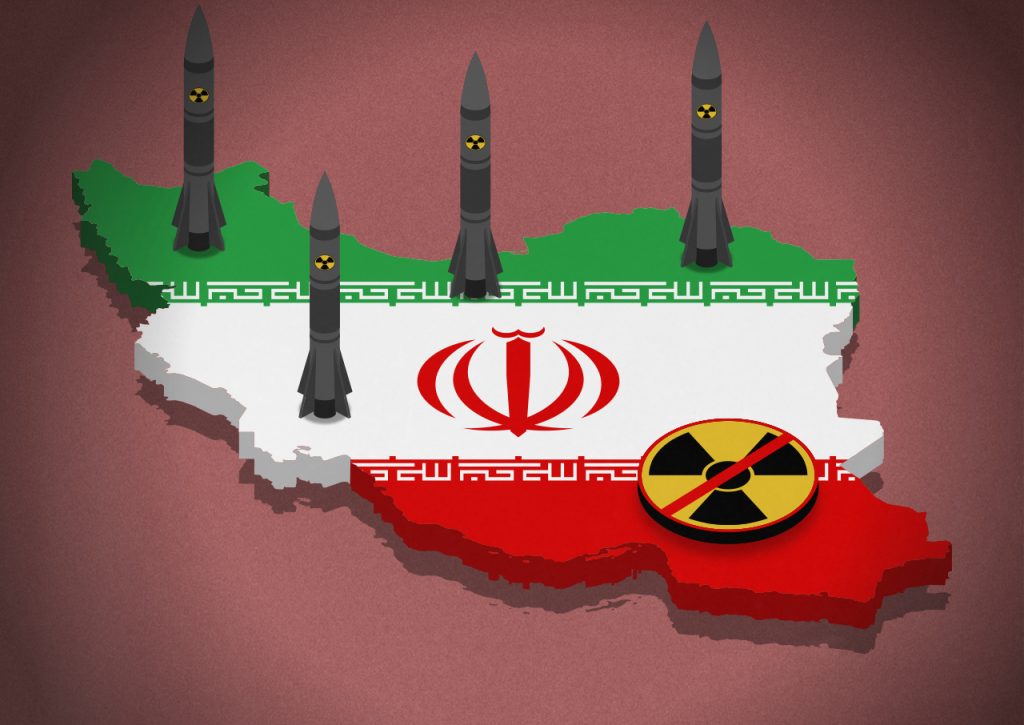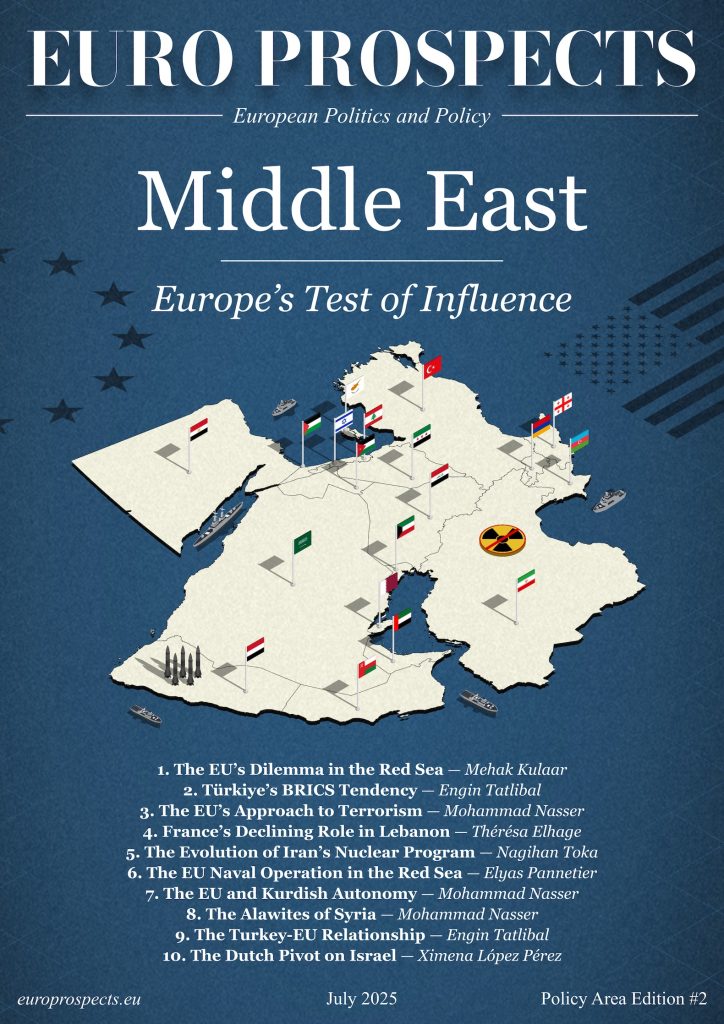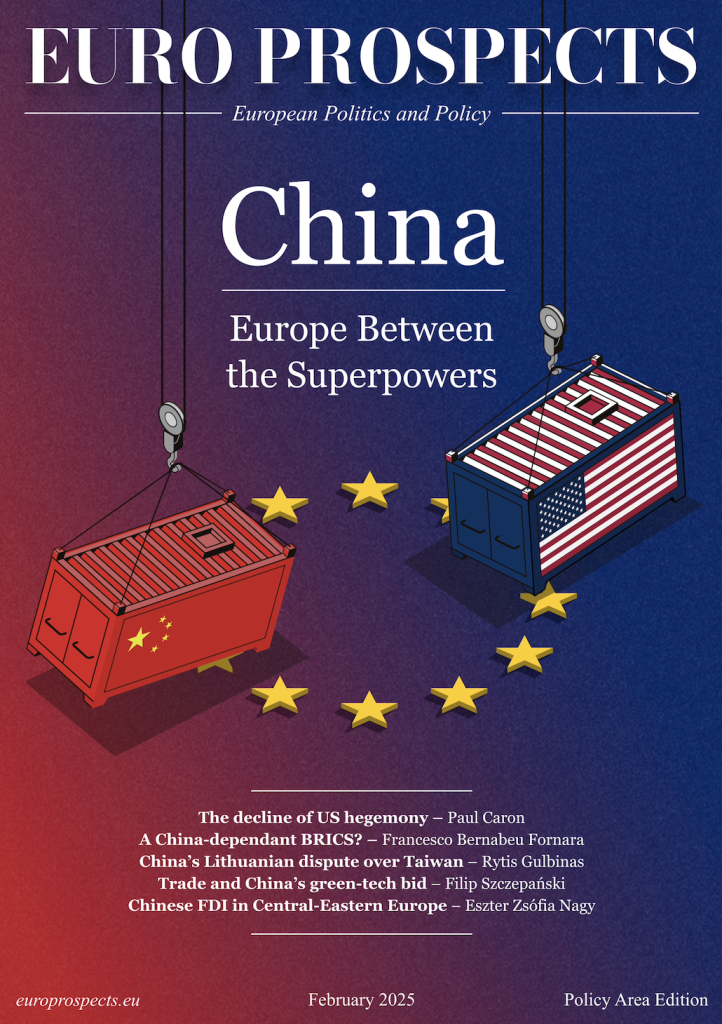16 min read — Analysis | Iran | Middle East | Geopolitics
The Evolution of Iran’s Nuclear Program: From Cooperation to Controversy

Iran’s nuclear journey began in the 1950s with U.S. support but shifted course after the 1979 Islamic Revolution. The Iran-Iraq War and regional security threats fuelled Iran’s pursuit of nuclear capabilities. This led in to 2002 to the exposure of secret nuclear facilities, leading to intensified international scrutiny, sanctions, and diplomatic efforts, culminating in the 2015 Joint Comprehensive Plan of Action (JCPOA). However, the U.S. withdrawal from the agreement in 2018 escalated tensions, with Iran expanding its uranium enrichment. Global concerns over Iran’s nuclear ambitions stem from the potential for regional instability, nuclear proliferation, and the risk of these weapons falling into the hands of militant groups.
The Beginnings of Iran’s Nuclear Program
In 1953, under the “Atom for Peace” program of then US President Dwight D. Eisenhower, financing was provided to developing countries to promote the use of nuclear power for energy production and peaceful purposes. Included intros program was Iran, supporting its nuclear energy projects, thus gaining an essential ally in the Middle East and a strategic supporter during the Cold War. Until 1979, relations between the U.S. and Iran were based on strong cooperation. Up until the revolution, the relationship between the USA and Iran was quite good due to the pro-western attitude of the shah of the time, Mohammad Reza Pahlavi. On the other hand, then-Prime Minister Mohammad Mossadegh, who struggled for power with Pahlavi, was more embraced and loved by the people due to his Iranian nationalist attitude in domestic and foreign policy. In this process, America and the United Kingdom, witnessing Mossadegh’s nationalization efforts, carried out a coup against Mossadegh to prevent further degrading of the former powers’ influence over the country. Thereafter, the United States continued to support Iran in all areas, including in nuclear energy development. Despite this, its relations with the West were seen as anti-Islamic by the people, which eventually led to the 1979 revolution.
The 1979 Islamic Revolution and Shift in Iran’s Foreign Policy
Following the Islamic Revolution, Iran adopted a foreign policy characterized by strong anti-Western sentiment, a radical shift in dynamics. One year after the revolution, in 1980, the Iran-Iraq War began, sparking a period where Iran realised the need for a deterrent military force internationally. Ayatollah Ruhollah Khomeini, the leader of Iranian Islamic Revolution, did not consider the use and development of nuclear weapons religiously appropriate due to their high cost, devastating effects, and indiscriminate nature that could affect innocents—a policy which significantly changed following Saddam Hussein’s chemical weapons attacks during the war, revealing a perceived necessity of intensifying Iran’s nuclear activities to increase its own deterrence capacity. By 1988, then-Iranian President Ali Akbar Hashemi Rafsanjani had announced that Iran would accelerate its efforts to develop nuclear technology.
As alluded to, Iran’s pursuit for nuclear capabilities has been driven by a complex interplay of strategic, security, and political considerations, including regional leadership ambitions, national security imperatives, deterrence strategies, energy independence, and regime legitimacy. Possessing nuclear capabilities would not only grant Iran a strategic edge over its regional rivals but also serve as a counterbalance to Israel’s nuclear arsenal. Furthermore, the potential for nuclear deterrence has played a critical factor in Iran’s foreign policy, aimed at mitigating military threats and economic sanctions imposed by the West. The U.S.-led invasions of Afghanistan in 2001 and Iraq in 2003 further cemented Tehran’s perception of external threats, compelling it to seek stronger defense mechanisms to safeguard its sovereignty and stability.
The Revelation of Secret Nuclear Sites
In 2002, a press conference in Washington, D.C., by Ali Reza Jafarzadeh, revealed Iran’s secret nuclear activities in Natanz and Arak. While Iran had previously claimed energy production as the purpose of its atomic program, since 2002, it was revealed that Iran had the capacity to enrich uranium and develop heavy water—vital to militarising nuclear power. The revelation of suspicious activities brought about demands for complete inspections of Iran’s nuclear facilities by the International Atomic Energy Agency—for which Iran has rejected all of these requests.
By 2003, diplomatic contact between Iran and the EU trio (E3)—France, Germany, and the UK—began, driven again by demands to suspend Iran’s uranium development activities. As a result of these negotiations, Iran at first accepted reconciliation, but soon re-continued its activities. With the inauguration of Iranian President Mahmoud Ahmadinejad in 2005, uranium development activities gained further momentum. In 2006, Ahmadinejad announced that Iran had succeeded in enriching uranium to 3.5% and declared Iran a ‘nuclear state.’ As such, the United States and European Union countries increased their sanctions against Iran. The European Union (EU) gradually imposed increasing economic and diplomatic sanctions from 2006 onwards. In 2012, the harshest sanctions in history against Iran were introduced, altogether banning oil imports, cutting off access to Iranian banks to the EU financial system, blocking the transfer of nuclear technology, and halting insurance services, seriously shaking the Iranian economy.
Diplomatic Efforts and the JCPOA
Rouhani, who replaced Ahmadinejad in the 2013 presidential elections, marked a shift in Iran’s nuclear policy, deciding to move forward with more moderation, reconciliation, and transparency than Ahmadinejad.
Under this new context, the much-known Joint Comprehensive Plan of Action (JCPOA) was signed in 2015, better known as the Iran nuclear deal. The JCPOA came to be a nuclear agreement signed between Iran and the permanent members of the United Nations Security Council (United States, China, Russia, France, United Kingdom) plus Germany (ie., P5+1). The agreement stipulated that Iran would reduce its uranium enrichment activities to limit its capacity to produce nuclear weapons, agreeing that its nuclear facilities would be inspected by the IAEA (International Atomic Energy Agency), and that it would not acquire materials suitable for nuclear weapons production. In response, Western economic sanctions on Iran were lifted, with the EU and others resuming trade.
In an unprecedented shift in events in 2018, the United States, headed by Donald Trump, announced that they would withdraw from the JCPOA as a unilateral party. The Trump administration claimed that the JCPOA did not impose strict enough controls on Iran’s nuclear program and that Iran did not fully comply with the terms of the agreement.
In addition, Trump considered Iran’s potential to produce nuclear weapons and its regional military activities as issues outside the scope of the agreement, arguing that the JCPOA did not deter Iran from the capacity to produce nuclear weapons. He additionally went on to consider the JCPOA agreement as the ‘worst’ agreement in American history. After withdrawal, it primarily imposed sanctions on Iran, and in response to this situation, sparking Iran to resume activities to develop up to 60% uranium. Other parties of the JCPOA, including the EU, have criticized this move of the United States, while maintaining diplomatic relations with Iran in an attempt to ensure the validity of the agreement.
Why do countries want to prevent Iran from becoming a nuclear state?
The desire to acquire nuclear weapons is primarily due to the efforts of states to strengthen their position in security, independence, and the international system. Indeed, the purpose of ‘nuclear deterrence‘ lies at the heart of states’ strategies to protect their sovereignty and territorial integrity, much from an IR realist point of view. Aiming to be an active actor in the global balance of power and to have a more significant sway in the international arena, countries have chosen to develop nuclear weapons have done it in this direction.
That said, because of the high destructive capacity of nuclear weapons, their use and attainment have been curbed within the framework of international law. While often encouraging nuclear technology for peaceful purposes such as nuclear energy, international agreements on the topic have established controls and limitations.
As such, Iran’s anti-Western foreign policy adopted after the Islamic Revolution raised serious concerns—especially in the United States and EU countries—that the country may use its already-fostered nuclear development programmes against the West by acquiring nuclear weapons. Such concerns have united Western states on a common ground to limit Iran’s nuclear capability—concerns that are not unfounded. When scrutinising Iran’s rhetoric regarding nuclear armaments since the Revolution, the country has put out statements alleging, for example, that if it acquires nuclear capabilities, it will use this power to bring the Islamic world together.
In addition, concerns over Iran’s potential ability to develop and safeguard nuclear weapons have contributed to global security tensions. Due to Iran’s strategic location in the Middle East, there is a risk that these weapons will fall into the hands of radical groups if adequate security measures are not taken. In particular, the possibility of Iranian-backed militia forces in Lebanon, Iraq, Syria, and Yemen reaching nuclear capacity raises the danger of nuclear terrorism through its proliferation.
As for the Gulf countries, Iran’s efforts to develop nuclear capacity are seen as a serious threat to regional security. Countries such as Saudi Arabia and the United Arab Emirates are concerned that Iran’s acquisition of nuclear weapons will disrupt the balance of power in the region and hence spark a nuclear weapons race. While Saudi Arabia has repeatedly stated that it may launch its own nuclear program if Iran obtains nuclear weapons, the UAE follows an alternative path with peaceful nuclear energy projects. Bahrain has taken a similar stance against Iran, while countries such as Qatar and Kuwait prefer a more balanced and diplomatic approach. On the other hand, Oman has traditionally played a mediating role and supported diplomatic solutions between Iran and the West. Under this multilateral context, it is evident to see how Iran’s nuclear policies have drastic impact across the region, sparking retaliations, diplomatic pressures, and economic impacts.
The Impact of Assad’s Fall and Trump’s Re-Election
Two major developments currently pose significant threats to Iran’s regional power: the re-election of Donald Trump as U.S. president and the collapse of the Bashar al-Assad regime, Iran’s key ally in the region. The fall of Assad severely weakened Iran’s strategic alliance known as the “Axis of Resistance,” diminishing Tehran’s regional influence and strategic objectives. Syria has long served as a critical logistical hub for Iran, facilitating the transfer of weapons and supplies to Hezbollah via land routes. With Assad’s removal, this vital connection was severed, undermining Hezbollah’s operational capacity and deterrence against Israel. Additionally, other allied groups, such as Hamas and the Houthis in Yemen, face increasing operational challenges, further restricting Iran’s ability to project power across the region.
The re-election of Donald Trump on January 20, 2025, has reignited discussions about his administration’s stance on Iran. Given the extensive sanctions imposed on Iran during his previous presidency, it is evident that economic pressure on Tehran is set to continue. Although Trump has expressed a desire to negotiate a nuclear agreement with Iran, Supreme Leader Ayatollah Ali Khamenei has dismissed the possibility of talks, calling them “neither wise nor honorable.” These statements indicate that the deadlock and uncertainty in U.S.-Iran relations will likely persist.
In conclusion, recent developments underscore the ongoing complexity of Iran’s geopolitical landscape. The combination of escalating external pressures and internal strategic challenges suggests that Iran’s regional position remains precarious, with its future course shaped by diplomatic tensions and shifting power dynamics.
Conclusion
The European Union has played a central role in diplomatic efforts to regulate Iran’s nuclear program, advocating for engagement over confrontation. Unlike the United States’ more aggressive stance, the EU has sought to balance security concerns with diplomatic solutions, exemplified by its role in brokering the Joint Comprehensive Plan of Action (JCPOA) in 2015. The EU viewed the agreement as a crucial step toward preventing nuclear proliferation while maintaining economic and political ties with Iran. However, the U.S. withdrawal from the deal in 2018 and Iran’s subsequent acceleration of uranium enrichment have strained these efforts, forcing the EU into a difficult position between maintaining its diplomatic approach and addressing security concerns shared by regional allies like Saudi Arabia and Israel.
Despite sanctions and diplomatic setbacks, the EU has continued to advocate for dialogue, recognizing that a stable Iran is vital for European security and economic interests. However, recent developments—including Donald Trump’s re-election and the potential collapse of the Assad regime—have further complicated the EU’s ability to mediate. While the EU remains committed to non-proliferation and regional stability, its influence in shaping Iran’s nuclear trajectory faces significant challenges amid shifting global power dynamics. The coming years will test the EU’s ability to maintain diplomatic leverage and navigate the evolving security landscape in the Middle East.
Iran’s nuclear ambitions have constituted one of the most contentious issues in global security. Dating back to Cold War-era cooperation with the West, Iran’s nuclear program found its origin with U.S. support for nuclear energy proliferation, taking a drastic turn following the 1979 Islamic Revolution—one driven by regional conflicts and shifting security imperatives. The 2002 revelation of secret nuclear facilities with military purposes triggered international sanctions and diplomatic efforts, culminating in the 2015 Joint Comprehensive Plan of Action (JCPOA).
However, the U.S. withdrawal from the deal in 2018 during Trump’s first term reignited tensions, with Iran accelerating uranium enrichment and fuelling fears of nuclear proliferation. As geopolitical shifts reshape the region—including Donald Trump’s re-election and collapse of the Assad regime—the question remains: Will diplomacy and global pressure be enough to curb Iran’s nuclear aspirations, or is the world on the brink of witnessing the rise of a new nuclear power in the Middle East?
Write and publish your own article on Euro Prospects
Subscribe to our newsletter – stay informed when we publish articles on pressing European affairs.

